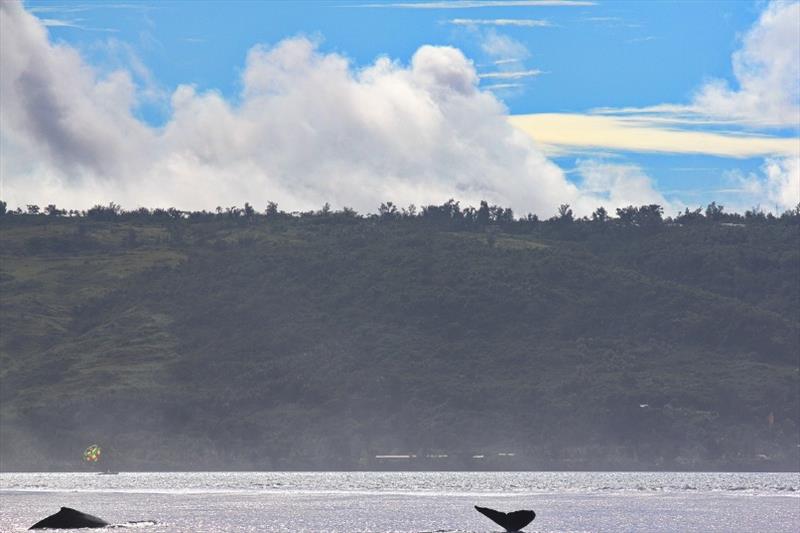
Uncovering the identity of humpback whales breeding in the Mariana Archipelago
by NOAA Fisheries 8 Feb 2020 19:17 UTC

Humpback whales off Saipan in the Mariana Archipelago © NOAA Fisheries / Marie Hill
Every year, humpback whales in the western Pacific Ocean migrate south to winter breeding grounds. Some whales spend their winters in the waters of the Mariana Archipelago, but we know less about humpback whales in the Marianas.
Our researchers have been studying these whales off Saipan since 2015, observing their activities and determining where they go. Our newly published research suggests that these whales are breeding in the Marianas and that at least some of these whales are part of a distinct breeding population of western North Pacific humpback whales.
We have learned that humpback whales are not just passing through the Marianas on their way to other winter breeding areas. Instead, they are using these waters to mate and give birth. We have observed newborn and young calves, competitive groups of male whales, and reproductive females returning to the area in more than one year. These are all indicators of breeding activity.
Collaborating with international researchers
Previous studies have found that humpback whales in the western North Pacific use the waters off Japan and the Philippines to breed during winter months. Those whales then move north to the waters off Russia and Alaska to feed during summer months. But humpback whales in the Marianas were not part of these studies.
To investigate where else the Marianas humpback whales go in the western North Pacific, we reached out to other researchers of humpback whales in this region. They compared our images of Marianas humpback whales with their own images from four areas:
A third of the 33 cataloged Mariana humpback whales were matched to at least one of these other locations. Some of the individuals appear to be the whale equivalent of jet-setters, ranging widely and traveling to multiple locations.
One male was identified in three locations: the Philippines, Japan, and Russia. The distance between the Babuyan Islands, Philippines and the Commander Islands, Russia is more than 1,800 miles alone.
Population connections
The movements of individual whales between the four different breeding areas show that they are part of a connected breeding population. But interestingly, genetic information from skin samples suggest that there may be two different breeding populations. One uses the Philippines and Okinawa, and another uses the Mariana Archipelago and Ogasawara.
This finding is important because breeding western North Pacific humpback whales are listed as endangered under the U.S. Endangered Species Act as one population. If there are actually two distinct breeding populations in the western North Pacific, then we need more information about them.
First, we need to determine the current size and status of each population and all the areas they use for breeding and feeding. Then, we must identify any potential threats they face in these areas. With this information, we can better protect these whales and allow both populations to thrive.